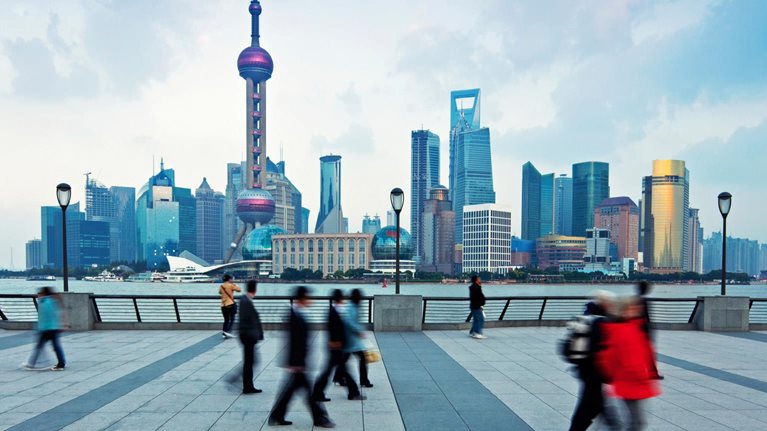It is not enough for global businesses to know that in coming years China’s economy will move away from an overreliance on investment and toward more consumption. They also must know that the potential costs and benefits of rebalancing the world’s second-largest economy are high and will affect industries not only domestically but also around the world. The degree of impact depends largely on the policies that Beijing chooses to implement. While China’s leadership—under both President Xi Jinping and his predecessor, Hu Jintao—has made it clear that it understands the risks of rebalancing, the process won’t be easy. Companies must be ready.
The reason for rebalancing is obvious. The sharp increases in investment that have driven China’s rapid economic growth for the past 30 years are not sustainable, and consumers can’t provide additional demand unless wealth is redistributed toward Chinese households. The most obvious consequence of rebalancing is that it will result in much slower growth over the medium term. While many economists now project that average annual economic growth will fall to between 5 and 7 percent a year during the next decade, I expect it to slow even more, perhaps to 3 to 4 percent a year. In modern history, no country that has experienced an investment-driven growth “miracle” has avoided a slowdown (such as Japan’s after 1990) that surprised even the pessimists, and it is hard to find good reasons to think China will be an exception.
If consumption is to grow enough as a source of demand to replace investment—in other words, to force up household income as a share of GDP—Beijing must reverse policies, such as keeping the currency undervalued and depressing interest rates, that for the past three decades have subsidized investment by constraining the growth of household income. The government must pursue such policies while reconciling the country’s conflicting interests, including those of the powerful groups, sectors, and companies that have benefited the most from China’s investment-intensive growth model, especially from access to artificially cheap credit. As a result, many businesses in China and around the world will thrive, while others will be forced to make wrenching changes. Here are four predictions about the ways China’s rebalancing will affect the global economy:
1. The price of hard commodities will drop sharply. China consumes a disproportionate share of the world’s hard commodities, such as aluminum, copper, and iron ore. Adjusted for GDP, the country buys four to ten times as much of these commodities as the rest of the world does, and its appetite has driven most of the global increase in commodity demand during the past two decades. That demand is a direct consequence of the country’s growth-through-investment approach, which is far more commodity than consumption-intensive. As investment growth slows, so will China’s demand for hard commodities, whose prices may consequently drop, perhaps by as much as 50 percent, over the next few years. This will benefit countries that import hard commodities and companies where they are an important cost component. However, not all commodity prices will drop: if rebalancing succeeds, the income of China’s middle- and lower-middle classes should grow, keeping demand for food strong.
2. Industries that profit from building infrastructure or manufacturing capacity will suffer. Rebalancing will sharply reduce the growth of aggregate spending on construction equipment, heavy manufacturing, transportation, and other sectors that have historically benefited from China’s explosive surge in investment. Among these sectors, however, government policy will influence which will suffer more and which less.
3. Companies that produce consumer goods will be marginally affected overall, while specific sectors will do much better or worse. China’s rebalancing requires household incomes to continue growing faster than GDP. The composition of this growing consumption, however, may change dramatically. First, rebalancing means that the Chinese middle class will expand, reducing the relative importance of the rich and the poor in the country’s consumption profile. Second, political constraints will drive how the cost of rebalancing is distributed among the powerful vested interests, and that will affect how benefits are distributed among Chinese households. Faster growth in household income, for example, can occur as wages increase, as the price of imports drops, or as deposit rates rise, and each of these would benefit different sets of households and providers of different kinds of consumer goods.
4. Countries, especially developing ones, that rely heavily for growth on manufacturing will benefit. Low unit-labor costs, repressed interest rates, and an undervalued currency are at the heart of China’s export competitiveness. By definition, rebalancing increases all of these and will significantly reduce China’s export competitiveness, at least in the near term. This development has already benefited low-cost producers in countries such as Mexico, whose manufacturing sector was nearly decimated until recently by aggressively priced Chinese manufacturing exports. How foreign manufacturers benefit overall depends on political decisions about how China’s rebalancing occurs—for example, whether capital- or labor-intensive industries bear the brunt of the adjustment.
Beijing’s new leaders understand that they must urgently rebalance China’s economy. They also know that this will change the sources of Chinese demand dramatically and may involve significant direct transfers from the state to the household sector through measures such as privatization, land grants, and the elimination of residency requirements. These changes will fundamentally be driven by how China’s leadership decides to rebalance or, to put it less euphemistically, how it decides to balance the costs and benefits between powerful vested interests and the needs of the economy. It’s too early to say exactly how this will occur, but there is no question that it will drive or retard growth in many industries around the world.


